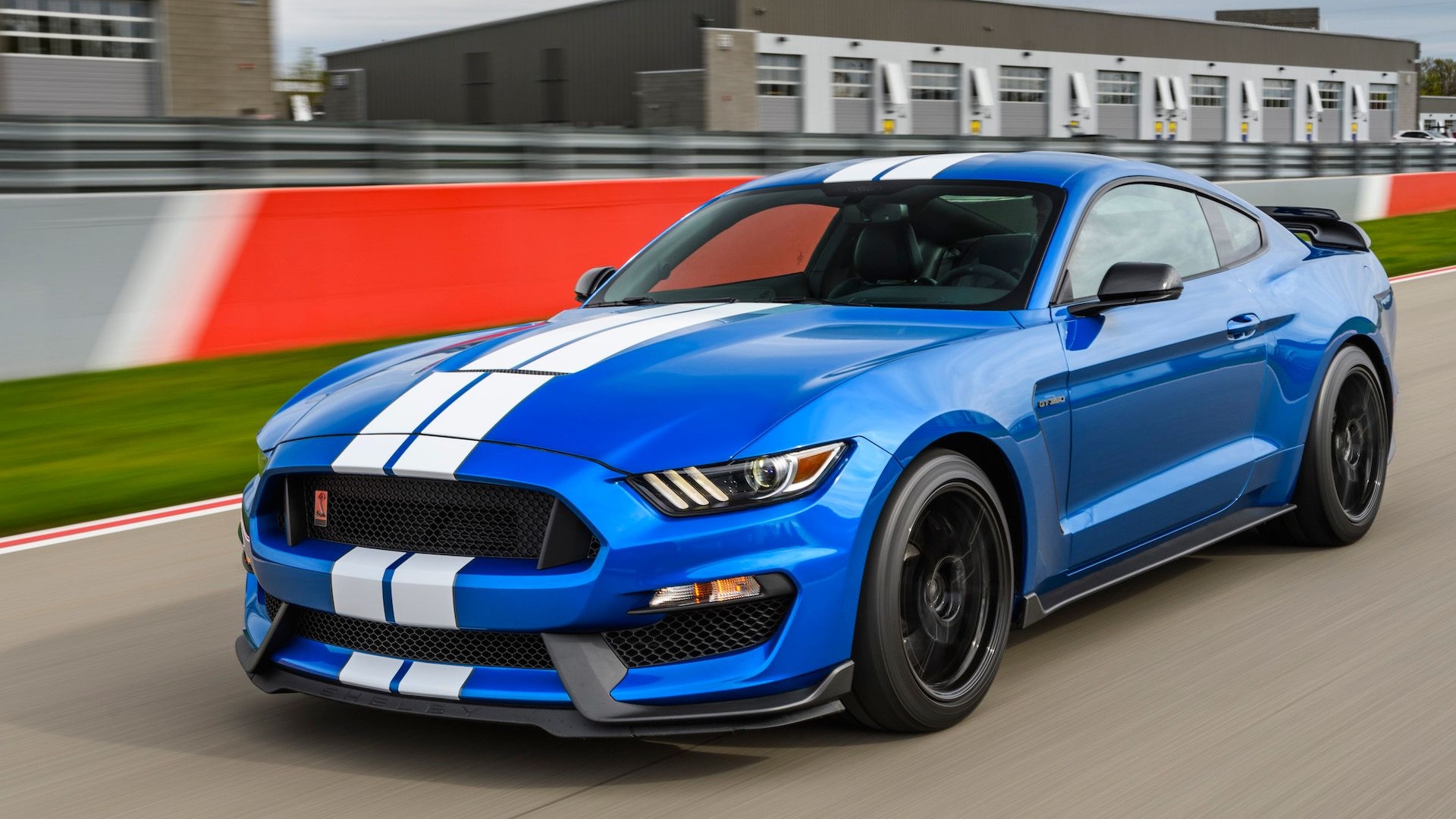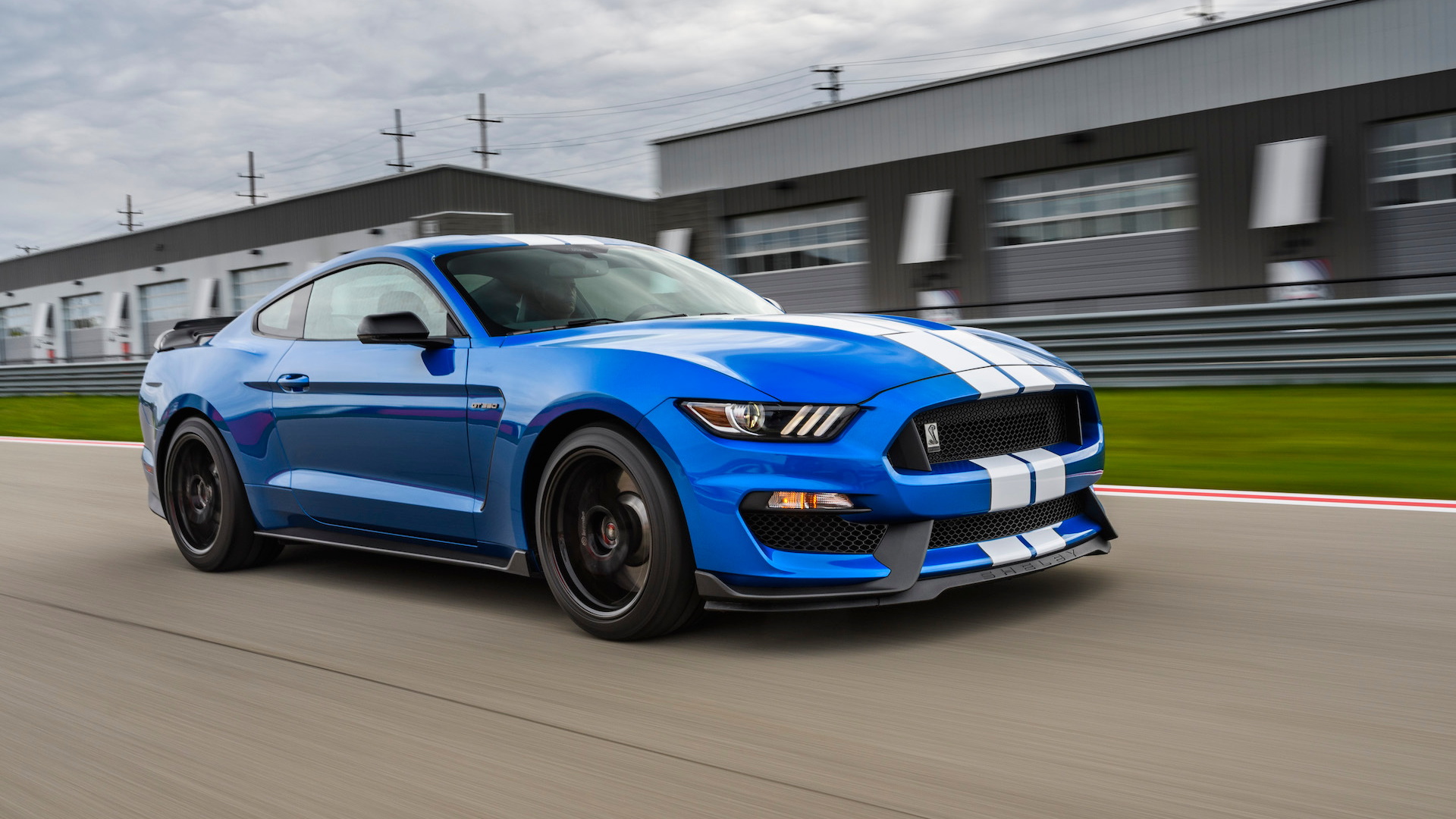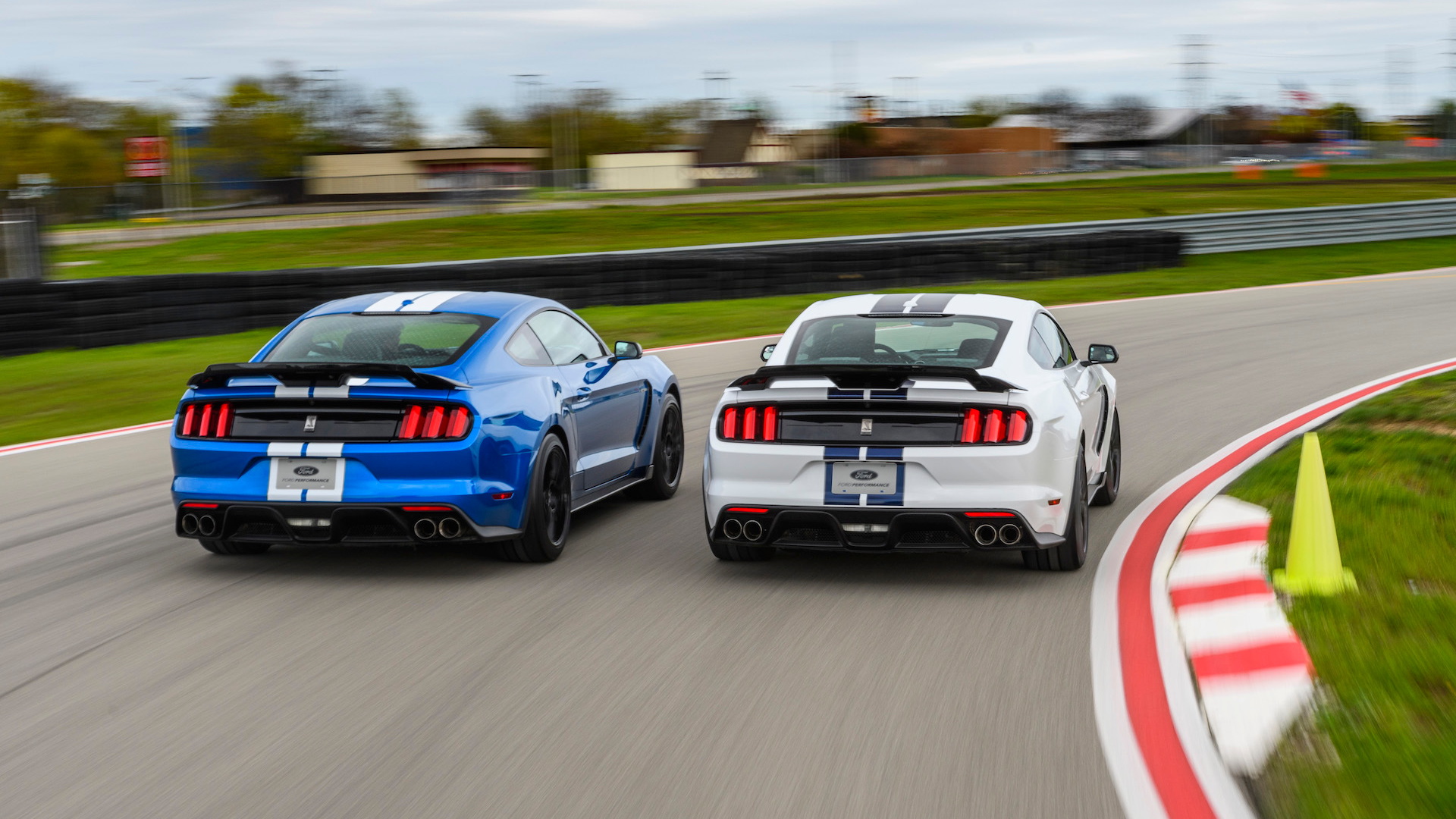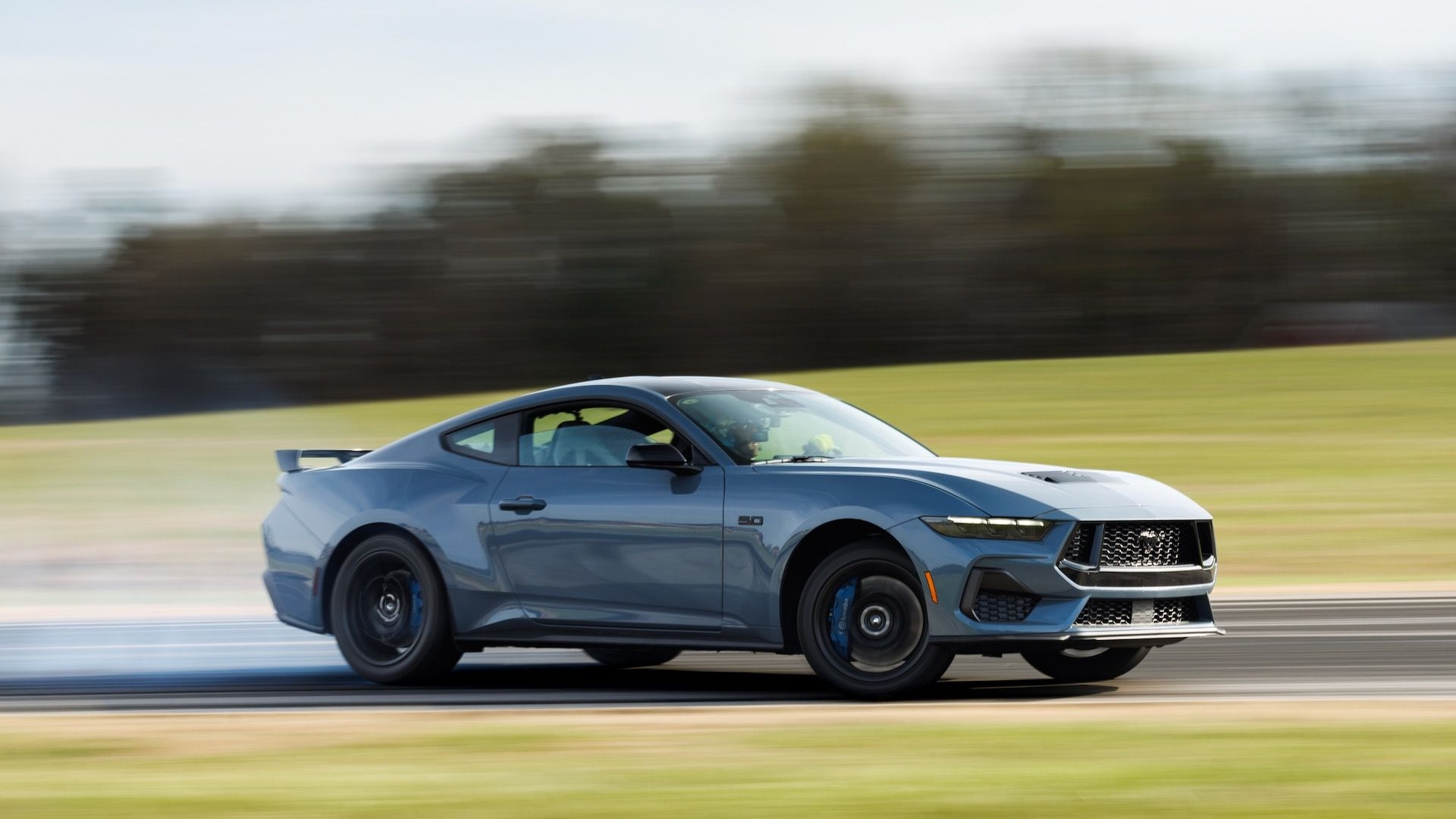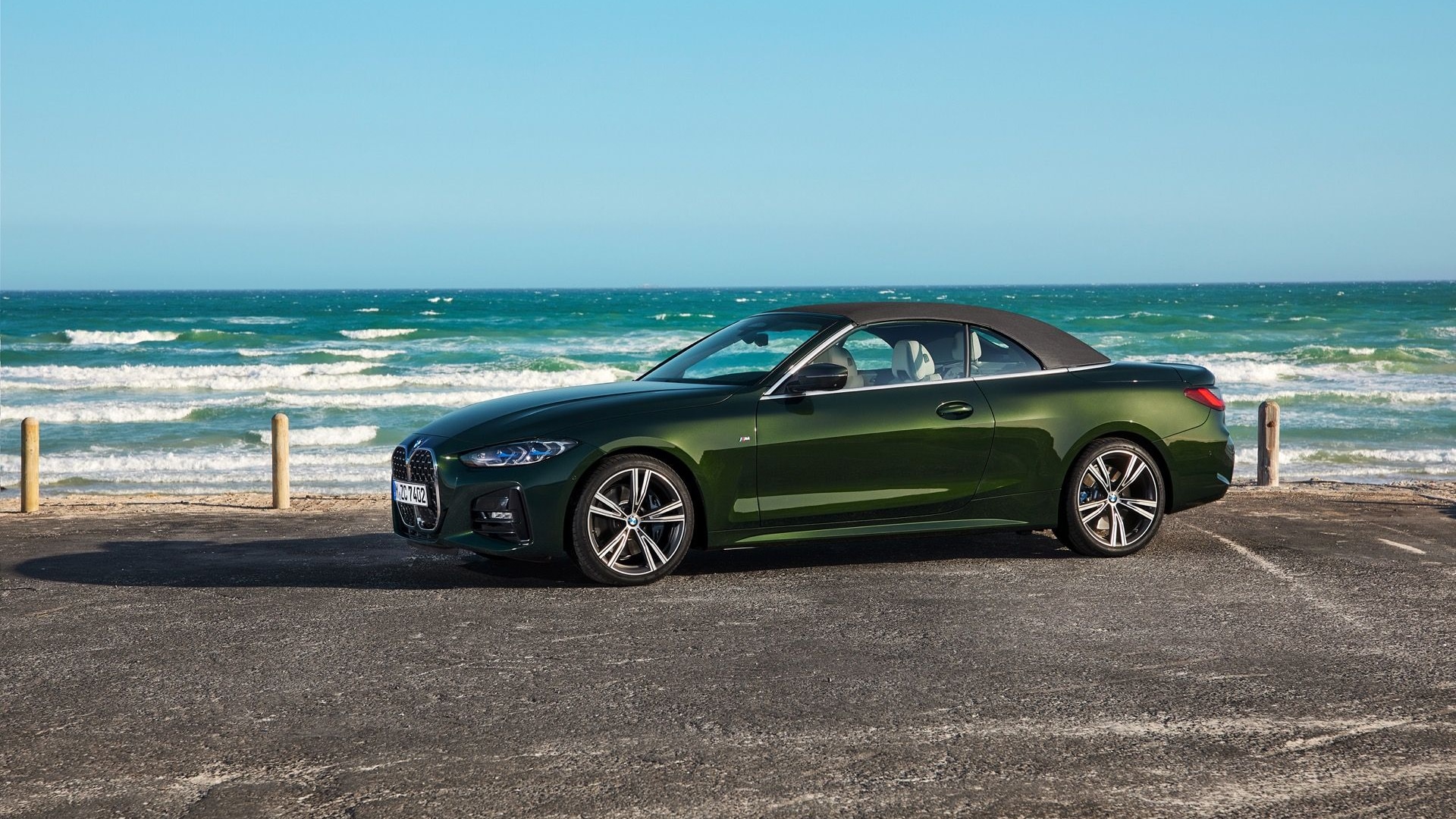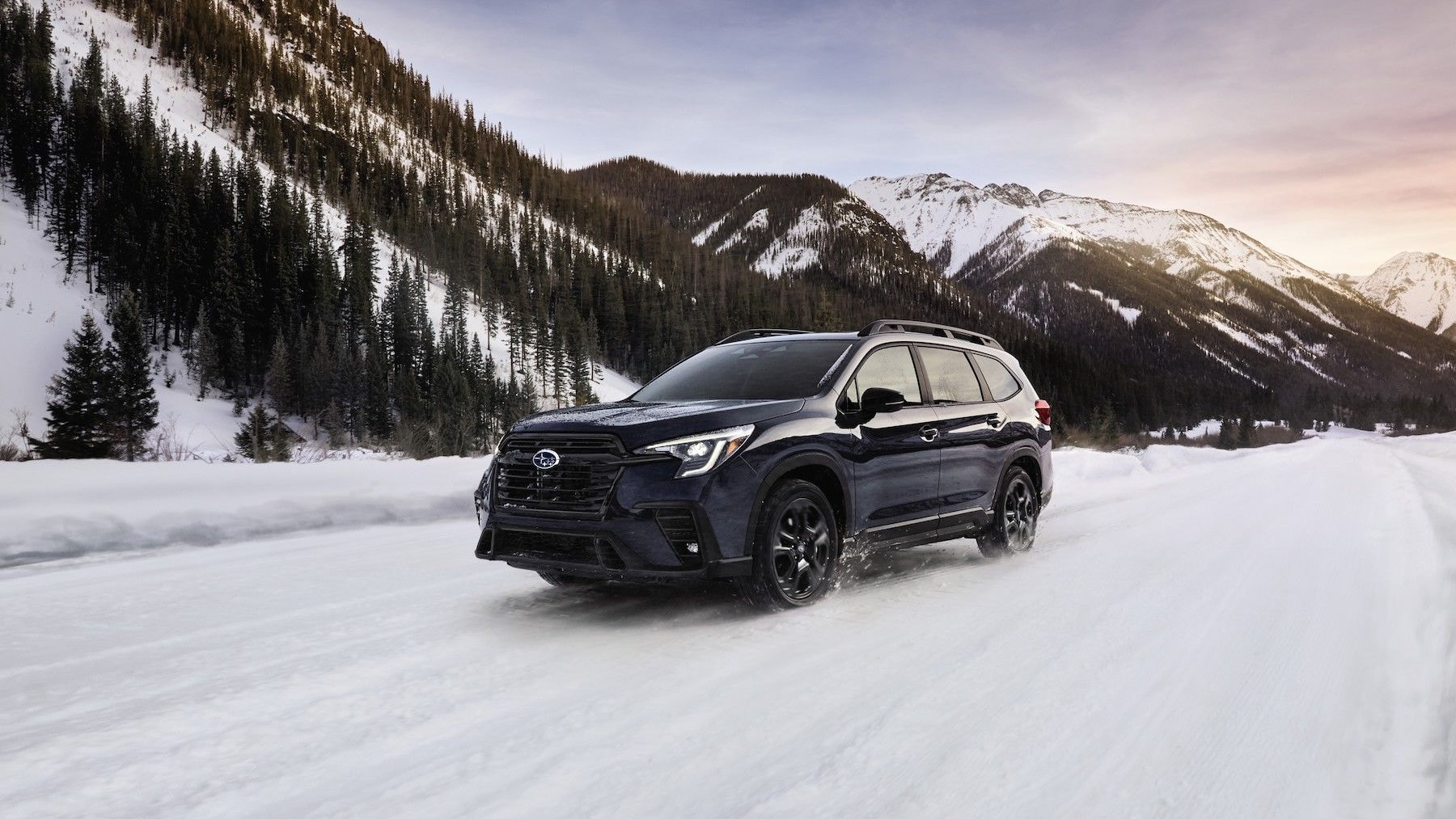The logo is a snake. The engine sounds a rebel yell upon startup, and from there only shouts more, more, more. The tires are steamrollers meant to provide grip on a racetrack. It sits low and lean, and looks downright mean. It’s the anti-SUV. It’s the 2019 Ford Mustang Shelby GT350, and it’s here to kick ass.
It already kicked ass, but Ford decided there were more asses to kick and improvements to be made to kick them.
I’m testing those improvements, all of which stem from greater grip and more downforce, on the 1.5-mile M1 Concourse in Detroit. It’s not the ideal venue for this car—the GT350 has longer legs than this track allows—but it’s a closed course with tight turns that can show off the evolution of the latest Shelby's track chops.
It’s hard not to be enamored with the simple visceral experience of the GT350. The flat-plane crank 5.2-liter V-8 belts out a death metal opera as it winds its way up to its supercar-like 8,250 redline and delivers 526 horsepower and 429 pound-feet of torque in the process. It's Ferrari meets NASCAR. Detroit meets Italy. And it’s all turned up to 11, or maybe 10.9 if 11 will get you a ticket for disturbing the peace. Along the way, it should eclipse 60 mph in less than the previous version’s 4.3 seconds thanks to more traction. Intoxicating.

2019 Ford Mustang Shelby GT350
But I digress. The V-8 and row-your-own 6-speed manual aren’t new for 2019. The tires are new, and they’re spectacular…at least when you warm them up. I’m in the first group out on a sunny 50-degree spring morning, and the new set of sticky Michelins aren’t sticky yet, leaving me less than confident in the car’s capabilities.
The next time out is a completely different story. The tires are warm now and the grip has arrived. Ford Performance worked with Michelin to develop a new version of its Pilot Sport Cup 2 tire for the GT350. They are the same massive sizes as the outgoing 19-inch Pilot Super Sports—295/35 up front and 305/35 in the rear—but they're stickier, with an endurance racing compound in the outer tread and a rigid elastomer in the inner tread.
The Michelins help the GT350 pick a line and hold it through any corner on this track, be it slight or tight. It’s not easy to kick out the rear end with copious application of throttle because the tires would rather stick than spin.
The steering isn’t particularly quick with its 16:1 ratio, but it's hefty and direct with lots of feel to help me place the car precisely. I’m not sawing at the wheel to direct the Mustang through the turns. I turn it in, dial in the line, let the car track through, and get on the throttle at the apex to send the engine screaming until the next bend. Glorious.

2019 Ford Mustang Shelby GT350

2019 Ford Mustang Shelby GT350
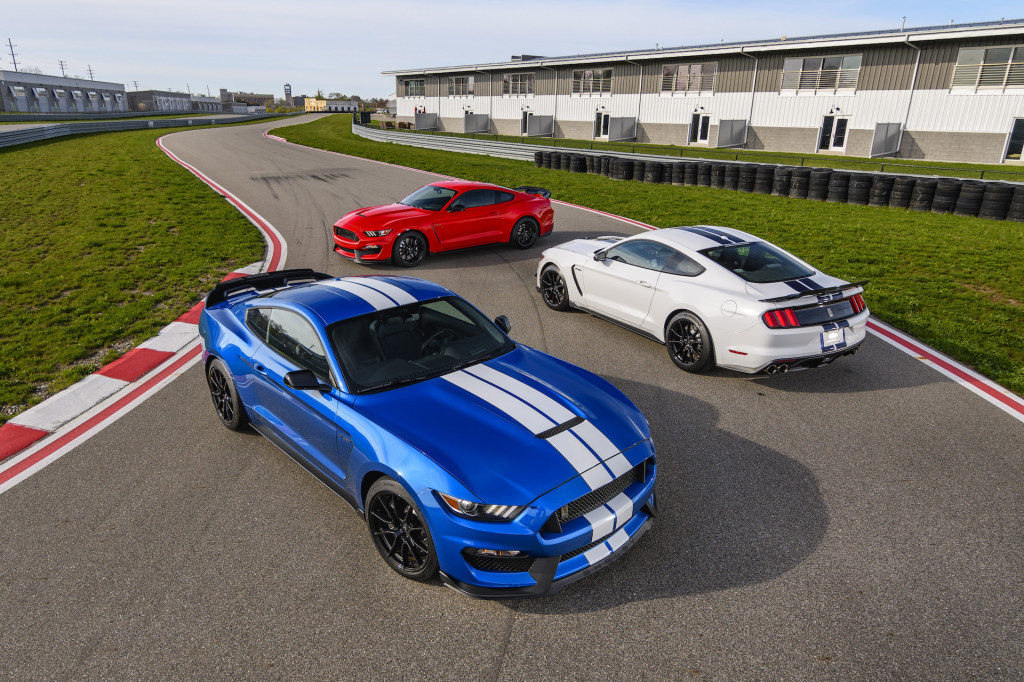
2019 Ford Mustang Shelby GT350
Push and pull
The 2019 Ford Mustang Shelby GT350 is the result of the push and pull of product development. It’s pushed from below by the Mustang GT Performance Pack 2 and pulled from above by the forthcoming Mustang Shelby GT500. Each car is developed by a different team within Ford.
The Mustang GT’s Performance Pack 2 made that car quicker around a track, likely pushing it up against the GT350’s times. The PP2 uses the GT350R’s front 305/35R19 Michelin Pilot Sport Cup 2 tires at all four corners to increase its grip. That effectively leapfrogged the GT350’s Pilot Super Sports, so something had to give. The PP2 also gets track-inspired springs, sway bars, and stability control, as well as the MagnaRide dampers that come on the GT350.
CHECK OUT: First drive review: The 2020 Toyota Supra is fast and frenetic
The pull comes from the development process of the GT500. Engineers learn lessons when developing a new car, and they applied some GT500 lessons to the new GT350.
Stickier tires equal more grip through turns and more power to the ground earlier, so Ford had to rework the suspension. Using expertise from both the GT500 and the GT4 road course race car, Ford Performance engineers, with the help of Billy Johnson, who pilots the Ford GT in WEC endurance racing and the Mustang GT4 in IMSA, set to work. They stiffened the front springs 10 percent, softened the rear springs 6 percent, used the stiffer 24-mm stabilizer bar from the GT350R, and retuned the damping curve of the MagnaRide magnetic dampers to account for the change in grip.
At Johnson’s suggestion, they also reworked the ABS to provide provide more rear braking in a straight line to stabilize the car during heavy braking and allow for more braking in a corner to take advantage of that grip. Those brake rotors are now solid instead of drilled, but their size is unchanged: 15.5-inch front dinner plates with 6-piston calipers and 15-inch rear rotors with 4-piston pinchers.

2019 Ford Mustang Shelby GT350

2019 Ford Mustang Shelby GT350

2019 Ford Mustang Shelby GT350
A stable Mustang
The Mustang remains dead-solid stable during heavy braking from 115 mph at the end of the longest straight, and its brake pedal stays firm and consistent during five hours of track time. Ford and Brembo aren't messing around with these brakes.
Part of the GT350's cornering and braking stability is from reworked aerodynamics, also courtesy of the GT500. Ford created a smaller opening in the front grille for less lift and balanced it with a new rear “Swing.”

2019 Ford Mustang Shelby GT350
This unique wing offers an optional Gurney flap that can be bolted on to improve downforce. With the Gurney flap in place in a track configuration, the 2019 GT350 conjures up 53 pounds of front lift and 238 pounds of rear downforce at 120 mph. Put the car in a street configuration without the Gurney flap and those numbers change to 40 pounds of front lift and 135 pounds of rear downforce. The 2018 model created 64 pounds of front lift and 186 pounds of downforce.
That gives the 2019 GT350 the best of both aerodynamic worlds. In the track configuration, it creates more downforce to keep the car on the pavement around corners. With the street setup, it has less drag for faster top-speed runs. The optional Gurney flap costs $850 and also comes with adjustable camber plates so track drivers can tune the suspension for track driving without the odd tire wear more negative camber would create on the street.

2019 Ford Mustang Shelby GT350

2019 Ford Mustang Shelby GT350

2019 Ford Mustang Shelby GT350

2019 Ford Mustang Shelby GT350
The GT350 didn’t start out as a perfect performance machine. When it arrived for the 2016 model year, the base version of the GT350 lacked the necessary coolers to make it the true track car it purported to be. In fact, I managed to overheat the transmission after only about 15-20 minutes of spirited second-gear switchback driving. Those coolers were included in the Track Package and they became standard for the 2017 model year. That’s when the GT350 became the car it was meant to be.
But now Ford has made it better. The changes for 2019 add $2,000 to the base price, which is now up to $60,235. That’s not cheap, but few cars offer this kind of track performance from the factory.
The 2019 Mustang GT350 is a brilliant performance machine. It already had the engine to inspire. Now it has more grip and more ability to lay it down. It’s even badder brother, the GT350R, will be updated for 2020, and the next-generation, 700-plus-horsepower GT500 is coming later this year, also for 2020. Together, this trio of snakes will be the cure for the milquetoast SUV blues that have infected America.
Ford provided travel and lodging to Internet Brands Automotive to bring you this firsthand report.

